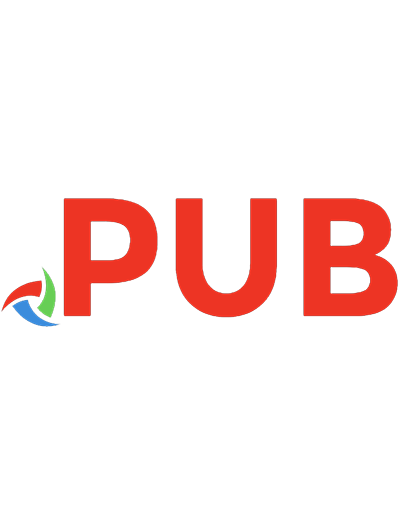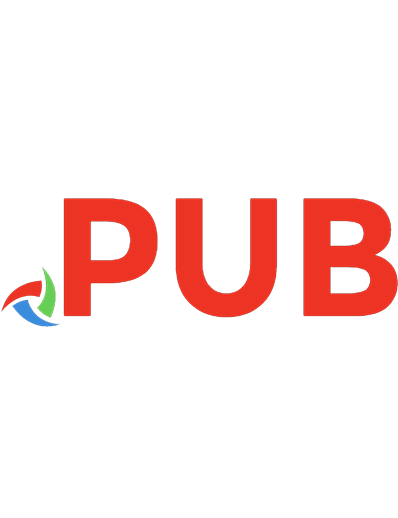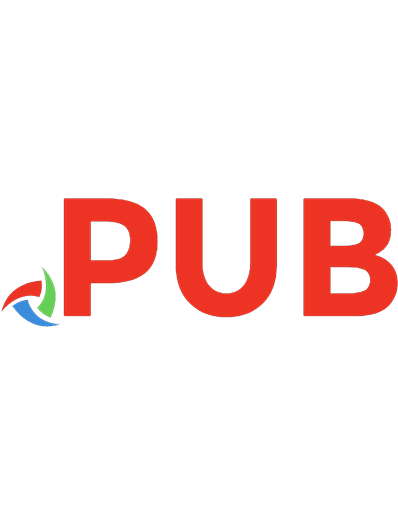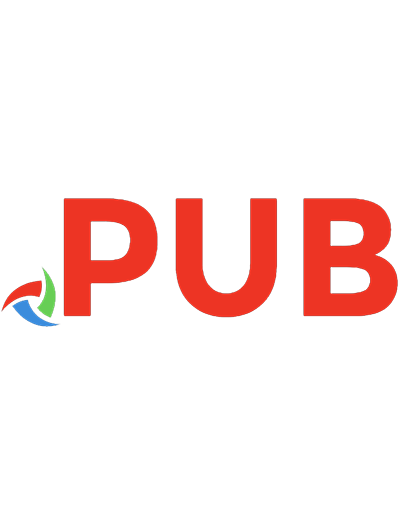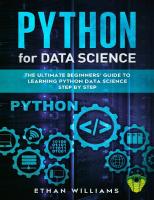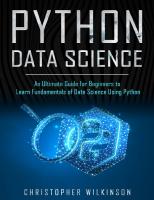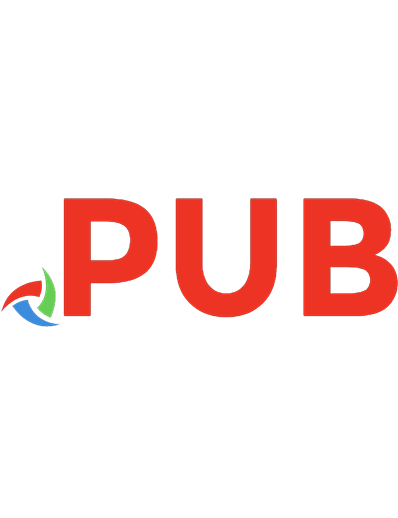Python Data Science: 3 Books in 1 7129300520, 6414100192, 5631500400, 2487200875, 1954400510, 9781491957653
Your Hands-On Guide to Data Analysis With Python Big data is an exciting field but how does one even begin to work with
114 83 809KB
English Pages 311 Year 2020
Table of contents :
PYTHON DATA ANALYTICSThe Beginner's Real-World Crash Course
PYTHON DATA ANALYTICSThe Beginner's Real-World Crash Course
Introduction
Chapter 1: Introduction to Data Analytics
Chapter 1: Introduction to Data Analytics
Difference Between Data Analytics and Data Analysis
Necessary Skills for Becoming a Data Scientist
Python Libraries for Data Analysis
Chapter 2: About NumPy Arrays and Vectorized Computation
Chapter 2: About NumPy Arrays and Vectorized Computation
Creating ndarrays
Table for Array Creation Functions
Chapter 3: Improve the System
Chapter 3: Improve the System
Quality in Software Development
Getting It Right the First Time
Cycles in Learning
5 Tips You Can Apply to Amplify Learning
Continuous Improvement
Chapter 4: Create Quality
Chapter 4: Create Quality
Pair Programming
Test Driven Development
Regular Feedback to Inspect and Adapt
Reduce Time Between Stages
Automation
Constant Integration
Controlling Trade-Offs
Build Quality in the Software Delivery
Chapter 5: Decide as Late as Possible
Chapter 5: Decide as Late as Possible
Concurrent Software Development
Rise in Cost
Problem Solving Strategies
Simple Rules in Software Development
Chapter 6: Fast Delivery
Chapter 6: Fast Delivery
Why Should You Deliver Fast?
Software Development Schedules
Information Producers
Cycle Time
Slack
To Deliver Fast, You Must Think Small
Chapter 7: Trust and Team Empowerment
Chapter 7: Trust and Team Empowerment
Team Empowerment
Motivation and Purpose
The Foundations of Motivation
Chapter 8: Integrity
Chapter 8: Integrity
The Goal to the Integrity
Perceived Integrity
Create a Model Approach Kind of Design
How to Maintain the Perceived Integrity?
Conceptual Integrity
How to Maintain Conceptual Integrity
Chapter 9: Optimize the Whole
Chapter 9: Optimize the Whole
System Thinking
System Measurements
Chapter 10: Go Lean in Your Organization
Chapter 10: Go Lean in Your Organization
Learn JIT Coaching
Chapter 11: The Relationship Between Lean and Agile Development
Chapter 11: The Relationship Between Lean and Agile Development
The Connection Between Lean and Agile Principles
Iterative Approach
Connection with Lean: Deliver Fast and Delay Commitment
Disciplined Project Management Process
Connection with Lean: Develop Quality
Short Feedback Loops
Connection with Lean: Remove waste
Lean and Agile Development
Chapter 12: Pros and Cons of Lean Software Development
Chapter 12: Pros and Cons of Lean Software Development
Conclusion
PYTHON DATA ANALYTICSA Hands-on Guide Beyond The Basics
PYTHON DATA ANALYTICSA Hands-on Guide Beyond The Basics
Introduction
Chapter One: An Introduction to Data Science And Data Analytics
Chapter One: An Introduction to Data Science And Data Analytics
What Exactly is Data Science?
What Information is Necessary for a Data Scientist to Know?
Who is a Data Analyst?
Do Data Analytics and Data Science Intersect?
Understanding Machine Learning
Do Machine Learning and Data Science Intersect?
Evolution of Data Science
Data Science: Art and Science
Five Important Considerations in Data Science
Ten Platforms to be Used in the Field of Data Science
Chapter Two: Types of Data Analytics
Chapter Two: Types of Data Analytics
Descriptive Analytics
Prescriptive Analytics
Predictive Analytics
Data Science Techniques that an Aspiring Data Scientist Should Know
Classification Analysis
Chapter Three: Data Types and Variables
Chapter Three: Data Types and Variables
Choosing the Right Identifier
Python Keywords
Understanding the Naming Convention
Creating and Assigning Values to Variables
Recognizing Different Types of Variables
Working with Dynamic Typing
The None Variable
Using Quotes
How to use Whitespace Characters
How to Create a Text Application
Working with Numbers
Converting Data Types
Chapter Four: Conditional Statements
Chapter Four: Conditional Statements
How to Compare Variables
Manipulating Boolean Variables
Combine Conditional Expressions
How to Control the Process
Nesting Loops
For
Chapter Five: Data Structures
Chapter Five: Data Structures
Items in Sequences
Tuples
List
Stacks and Queues
Dictionaries
Chapter Six: Working with Strings
Chapter Six: Working with Strings
Splitting Strings
Concatenation and Joining Strings
Editing Strings
Creating a Regular Expression Object
Chapter Seven: How to Use Files
Chapter Seven: How to Use Files
How to Open Files
Modes and Buffers
Reading and Writing
Closing Files
Chapter Eight: Working with Functions
Chapter Eight: Working with Functions
Defining a Function
Defining Parameters
Documenting your Function
Working with Scope
Understanding Scope
Manipulating Dictionaries and Lists
Abstraction
Chapter Nine: Data Visualization
Chapter Nine: Data Visualization
Know your Audience
Set your Goals
Choose the Right Type of Charts
Number Charts
Maps
Pie Charts
Gauge Charts
The Color Theory Advantage
Handling Big Data
Prioritize using Ordering, Layout and Hierarchy
Utilization of Network Diagrams and Word Clouds
Comparisons
Telling a Story
Chapter Ten: Visualization Tools for the Digital Age
Chapter Ten: Visualization Tools for the Digital Age
7 Best Data Visualization Tools
10 Useful Python Data Visualization Libraries
Chapter Eleven: An Introduction To Outlier Detection In Python
Chapter Eleven: An Introduction To Outlier Detection In Python
What is an Outlier?
Why Do We Need To Detect Outliers?
Why Should We Use PyOD For Outlier Detection?
Outlier Detection Algorithms Used In PyOD
Implementation of PyOD
Chapter Twelve: An Introduction To Regression Analysis
Chapter Twelve: An Introduction To Regression Analysis
Linear Regression Analysis
Multiple Regression Analysis
Chapter Thirteen: Classification Algorithm
Chapter Thirteen: Classification Algorithm
Advantages Of Decision Trees
Disadvantages Of Decision Trees
Chapter Fourteen: Clustering Algorithms
Chapter Fourteen: Clustering Algorithms
K-Means Clustering Algorithm
Code for Hierarchical Clustering Algorithm
Conclusion
References
PYTHON DATA ANALYTICSThe Expert’s Guide to Real-World Solutions
PYTHON DATA ANALYTICSThe Expert’s Guide to Real-World Solutions
Introduction
Chapter 1: Conceptual Approach to Data Analysis
Chapter 1: Conceptual Approach to Data Analysis
Techniques Used in Data Analysis
Data Analysis Procedure
Methods Used in Data Analysis
Types of Data Analysis
Tools Used in Data Analysis
Benefits of Data Analysis in Python over Excel
Possible Shortcomings of Analyzing Data in Python
Chapter 2: Data Analysis in Python
Chapter 2: Data Analysis in Python
Python Libraries for Data Analysis
Installation Guide for Windows
Installation Guide for Linux
Installing IPython
Building Python Libraries from Source
Chapter 3: Statistics in Python - NumPy
Chapter 3: Statistics in Python - NumPy
Generating Arrays
Slicing and Indexing
Importance of NumPy Mastery
Chapter 4: Data Manipulation in Pandas
Chapter 4: Data Manipulation in Pandas
Installing Pandas
Fundamentals of Pandas
Building DataFrames
Loading Data into DataFrames
Obtaining Data from SQL Databases
Extracting Information from Data
Dealing with Duplicates
Cleaning Data in a Column
Computation with Missing Values
Data Imputation
Describing Variables
Data Manipulation
Chapter 5: Data Cleaning
Chapter 5: Data Cleaning
Possible Causes of Unclean Data
How to Identify Inaccurate Data
How to Clean Data
How to Avoid Data Contamination
Chapter 6: Data Visualization with Matplotlib in Python
Chapter 6: Data Visualization with Matplotlib in Python
Fundamentals of Matplotlib
Basic Matplotlib Functions
Plotting Function Inputs
Basic Matplotlib Plots
Logarithmic Plots (Log Plots)
Scatter Plots
Display Tools in Matplotlib
How to Create a Chart
Using Multiple Axes and Figures
Introducing New Elements to Your Plot
Chapter 7: Testing Hypotheses with SciPy
Chapter 7: Testing Hypotheses with SciPy
Fundamentals of Hypothesis Testing
Hypothesis Testing Procedure
One-Sample T-Test
Two-Sample T-Test
Paired T-Test
Using SciPy
Installing SciPy
SciPy Modules
Integration
Chapter 8: Data Mining in Python
Chapter 8: Data Mining in Python
Methods of Data Mining
Building a Regression Model
Building Clustering Models


